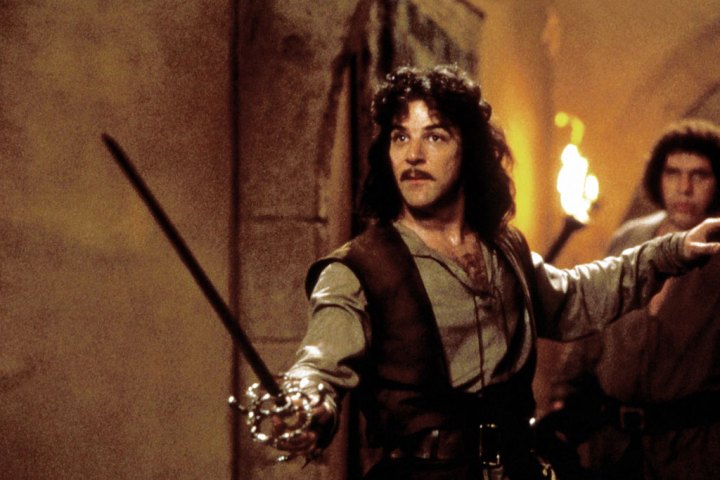The Princess Bride: a love letter to Inigo Montoya
The Princess Bride: A fairytale romance for everyone
With a title like “The Princess Bride,” a film opening with a typical 1980s boy’s bedroom seems a little out of place. But as we discover, that initial setting is an important part of us getting into the film because as we follow the story with that young boy, sick, in his bed and having to put up with his grandfather’s fairytales, we fall just as in love with it as he does. To put it more concisely, when I watched The Princess Bride for the first time, its opening scene was not what I was expecting. Later when I began reading William Goldman’s 1973 novel on which the film is based, it began to make sense. Taking us out of the story and giving us all the details of the story’s tellings, retellings, edits, abridgments, cuttings, and rewritings wasn’t just time-wasting and distraction, it was Goldman’s way of getting the reader truly invested; not just in the story of Buttercup and Co., but in the very processes that allowed the story to come to be: a book in my hand, and a film on the screen before my eyes.
So as I watched how Buttercup, Westley, Fezzik and Inigo overcame great adversity, and achieved their various personal goals, I wasn’t just watching their stories unfold. I was also watching the story change the relationship between a grandfather and grandson, and seeing how the story had real significance for them. Not just because it’s a great story, but because it meant something for them in their real lives. And now if I watch The Princess Bride again I will be reminded of when I first watched it, surrounded by lovely friends and having the time of my life. I’m sure we all have films like that in our lives, and it’s truly one of life’s great gifts.
The Princess Bride really does have something for everyone, and in many ways it does challenge stereotypes about masculinity and romance. For starters, the title might not necessarily appeal to a boy whose true love is possibly football or some other “typical” boy interest, but it becomes clear that the male characters in this film are real role models. They’re not only strong and brave but (and I think more significantly) honourable, loyal, and empathetic. At the edge of death, Westley believes so strongly that true love is worth living for that he quite literally comes back to life. Fezzik takes great joy from rhymes, and only wants to help his friends in any way he can. Inigo will stop at nothing to avenge his father, but his humility and honour mean he always treats his adversaries fairly. And the Sicilian- well, maybe we leave him out of it…
More on Inigo (because he’s my favourite and I adore him). Inigo Montoya isn’t exactly the main hero of The Princess Bride but I think naturally we do become very attached to and invested in his storyline, and in fact I’d argue his story has the most satisfying conclusion of all. Inigo’s story of heroism isn’t an epic love story or a prize-claiming Arthurian quest, but the story of a man who chooses to support someone who truly believes that love is his life’s greatest quest, whilst keeping his own search for justice in sight. He is always true to what he believes, never causing undeserved harm, and is duly rewarded for his pains with a very satisfying duel against the murderous Count Rugen.
There are lots of wonderful things about The Princess Bride (the novel and the film) which I couldn’t possibly cover in one post, but one of the things I most admire is how it’s framed as a fairytale that boys can also enjoy. Fairytales for male audiences prove that the romance genre isn’t just something frivolous for women but instead something which is genuinely moving and important and for everyone. Love really does conquer all, in The Princess Bride.



Comments
Post a Comment